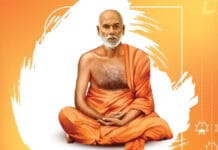Countercultural movements are social and cultural phenomena in which a group of individuals or a subculture rejects or opposes mainstream cultural, societal, and political norms. They often emerge in response to perceived injustices or dissatisfaction with the status quo and aim to create significant changes in society, culture, or politics through non-traditional means.
Countercultural movements aim to bring about social change, challenge established norms, and offer alternative ways of living and thinking. One of the most well-known countercultural movements is the American counterculture of the 1960s and 70s, which included elements such as the civil rights movement, the feminist movement, the gay rights movement, the anti-war movement, and the hippie movement. These sub-movements challenged established norms around race, gender, sexuality, and political authority.
The Beat Generation is often considered a precursor to the 60s counterculture in the US, especially the hippie movement. This countercultural spirit was characterized by the rejection of consumerism, exploration of Eastern spirituality, use of psychedelic drugs, and an urge for personal liberation, which have left lasting impacts on literature, music, visual art, and general societal attitudes. Countercultural movements aren’t exclusive to the US or the 60s. They can be found in various forms throughout history and across different cultures, aiming at systemic change concerning a broad set of issues, such as environmentalism, social justice, or anti-capitalism.

Countercultural movements can manifest in various ways, including through music, art, fashion, and activism. They can also be associated with specific political ideologies, such as anarchism, socialism, or environmentalism. These movements often play an essential role in social and political change. They can challenge the status quo and raise awareness of critical social issues. They can also inspire people to take action to create a more just and equitable society.
Countercultural movements can also be controversial. They are often seen as a threat to the established order and can be met with resistance from powerful interests. Countercultural movements can also be fragmented and divided, making it difficult to achieve their goals. Despite their challenges, countercultural movements play an important role in society. They help keep the dominant culture in check and provide a voice for marginalized groups. They also inspire people to think critically about the world around them and to work to create a better future.

Characteristics of Countercultural Movements
Rejection of Mainstream Values
Countercultural movements typically reject the dominant culture’s values, norms, and practices. They may view these mainstream values as oppressive, repressive, or lacking authenticity.
Alternative Lifestyles
Countercultural movements often promote alternative lifestyles that differ from the mainstream. These lifestyles can encompass various aspects, including communal living, non-conventional family structures, and alternative forms of work and education.
Critique of Authority
Countercultural movements frequently challenge existing power structures, including political, economic, and social hierarchies. They may be critical of governments, corporations, and other institutions they see as oppressive.
Expression through Art and Culture
Art, music, literature, and other cultural expression play a crucial role in countercultural movements. These forms of expression often serve as a means of communication, identity-building, and protest.
Social Activism
Many countercultural movements are driven by social and political activism. They engage in protests, demonstrations, and other direct actions to advocate for their causes and demand change.
Historical Examples of Countercultural Movements
Civil Rights Movement (1950s-1960s)

The Civil Rights Movement in the United States aimed to end racial segregation and discrimination. It employed nonviolent protest and civil disobedience to challenge oppressive laws and social norms.
Hippie Movement (1960s)

The hippie counterculture of the 1960s rejected mainstream values, embraced peace, love, and communal living, and advocated for social justice and civil rights. It was characterized by anti-war protests, rejecting consumerism, and experimentation with psychedelic drugs.
Punk Movement (1970s)
The punk movement emerged in the 1970s as a reaction to the perceived commercialization and conformity of mainstream music and culture. Punk music and fashion were known for their DIY ethos, anti-establishment lyrics, and rebellious spirit.
The Grunge Movement (1990s-1990s)
The Grunge Movement was a significant cultural phenomenon in the late 1980s and early 1990s, primarily associated with music and fashion but eventually influencing other areas such as visual arts and attitudes. Grunge fashion was defined by its “anti-fashion” stance, featuring thrift-store finds like flannel shirts, ripped jeans, and combat boots, creating a messy and unpretentious look.
The Occupy Movement (2011)

The Occupy Movement began in New York’s financial district with Occupy Wall Street (OWS), where protestors camped out in Zuccotti Park to show their dissent against income inequality, corporate influence over democracy, and unregulated financial markets. The OWS protest sparked similar demonstrations, and soon, the Occupy Movement spread to hundreds of cities worldwide.
The Black Lives Matter Movement (2013)

The Black Lives Matter (BLM) movement began in 2013 after the acquittal of Trayvon Martin’s killer, George Zimmerman. BLM is fundamentally a social movement advocating for the rights of Black individuals worldwide. It opposes violence and systemic racism towards the black community, seeking to raise awareness about racial profiling, police brutality, and racial inequality in the United States.
Feminist Movement (Various Waves)
Feminism represents a series of countercultural movements that have aimed to challenge and change societal norms related to gender roles, patriarchy, and women’s rights. Waves of feminism, such as first-wave feminism in the late 19th and early 20th centuries, second-wave feminism in the 1960s and 1970s, and subsequent waves, have all contributed to significant social change.
Contemporary Countercultural Movements
Environmental Movements
Various environmental movements challenge the status quo by advocating for ecological sustainability, climate action, and the protection of natural resources. They often criticize corporate interests and government policies detrimental to the environment.
LGBTQ+ Rights Movements
These movements have fought for the rights and recognition of LGBTQ+ individuals, including marriage equality, anti-discrimination laws, and social acceptance. They challenge traditional norms of gender and sexuality.
Anti-globalization Movements
These movements often protest against economic globalization and corporate power. They advocate for fair trade, workers’ rights, and the protection of local cultures.
Cyberculture and Digital Activism
The internet and social media have given rise to digital countercultures and forms of activism. Online communities and movements challenge established narratives and power structures, often advocating for transparency, digital privacy, and freedom of information.
Impact and Legacy
Countercultural movements have significantly impacted society by influencing social and political change, challenging the status quo, and contributing to the evolution of cultural norms and values.
- They can challenge the status quo and raise awareness of critical social issues.
- They can inspire people to take action to create a more just and equitable society.
- They can introduce new ideas and perspectives into the mainstream.
- They can help develop contemporary art, music, and fashion forms.
- They can provide a sense of community and belonging for marginalized groups.
Many ideas once considered countercultural have become mainstream over time, illustrating the potential for countercultural movements to shape the future.





























